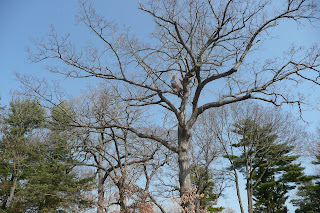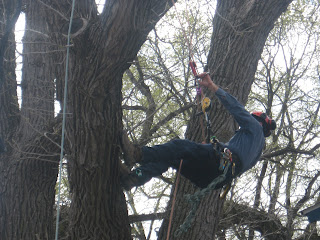The 15th of October is a special date in Southeast Wisconsin. That is date that most municipalities set for the start of pruning season for Oaks, Elms, and now, Ash. Many municipalities have chosen not to have laws on the books prohibiting the cutting of these types of trees when the bugs which carry their diseases. It is prudent, however, to have respect for the realities of the situation. The disease is carried by bugs. In the case of the Ash, the bugs are the malady. In the cases of Oak and Elm, the bugs carry the fungus which kills the tree. These bugs are attracted to stress pheromones that trees give off when they are injured. Pruning (cutting) trees is technically wounding it many times. If the bugs are attracted to the pheromones, and it's possible to prune the trees when the bugs are dormant, ie in the winter, then it would be prudent to do so. Vertical Techniques and many other arboricultural firms are not pruning Oak, Elm or Ash between March 15th and October 15 in order to be proactive against the spread of disease. We will have some great pruning shots in the next couple of weeks. Be sure to make it back here to check them out!
Vertical Techniques has been quite active lately. We have been contracting jobs in Milwaukee, New Berlin, Greendale, West Allis, and Madison. We have been Sub-contracting in Milwaukee and Green Lake and Mayville, WI. Over the summer we worked with Green Man of Oak Creek, WI to remove diseased American Elms (Ulmus americana) on the street in Wauwatosa, WI.
We have been volunteering with the Victory Garden Initiative in Milwaukee, WI. We have worked with Cody Ryan of Green Lake, WI to facilitate the donation and planting of 8 trees (six American Chestnut (Castanea Dentata) and two Butternut (Juglans cinnerea)) at the urban food forest being started at Concordia Gardens in Milwaukee. We have also volunteered and cut down many invasive Tree of Heaven (Ailanthus altissima) and Boxelder (Acer negundo). The material will be chipped and used in the gardens. The amount of resource that is just hanging over the fence-line is substantial and will go a long way in creating the soil that will grow the food forest and gardens. Check out our latest gardening blog post. You will see that you can use material from your trees to make a great vegetable garden. Thanks for checking in!
Vertical Techniques has been quite active lately. We have been contracting jobs in Milwaukee, New Berlin, Greendale, West Allis, and Madison. We have been Sub-contracting in Milwaukee and Green Lake and Mayville, WI. Over the summer we worked with Green Man of Oak Creek, WI to remove diseased American Elms (Ulmus americana) on the street in Wauwatosa, WI.
We have been volunteering with the Victory Garden Initiative in Milwaukee, WI. We have worked with Cody Ryan of Green Lake, WI to facilitate the donation and planting of 8 trees (six American Chestnut (Castanea Dentata) and two Butternut (Juglans cinnerea)) at the urban food forest being started at Concordia Gardens in Milwaukee. We have also volunteered and cut down many invasive Tree of Heaven (Ailanthus altissima) and Boxelder (Acer negundo). The material will be chipped and used in the gardens. The amount of resource that is just hanging over the fence-line is substantial and will go a long way in creating the soil that will grow the food forest and gardens. Check out our latest gardening blog post. You will see that you can use material from your trees to make a great vegetable garden. Thanks for checking in!



























































